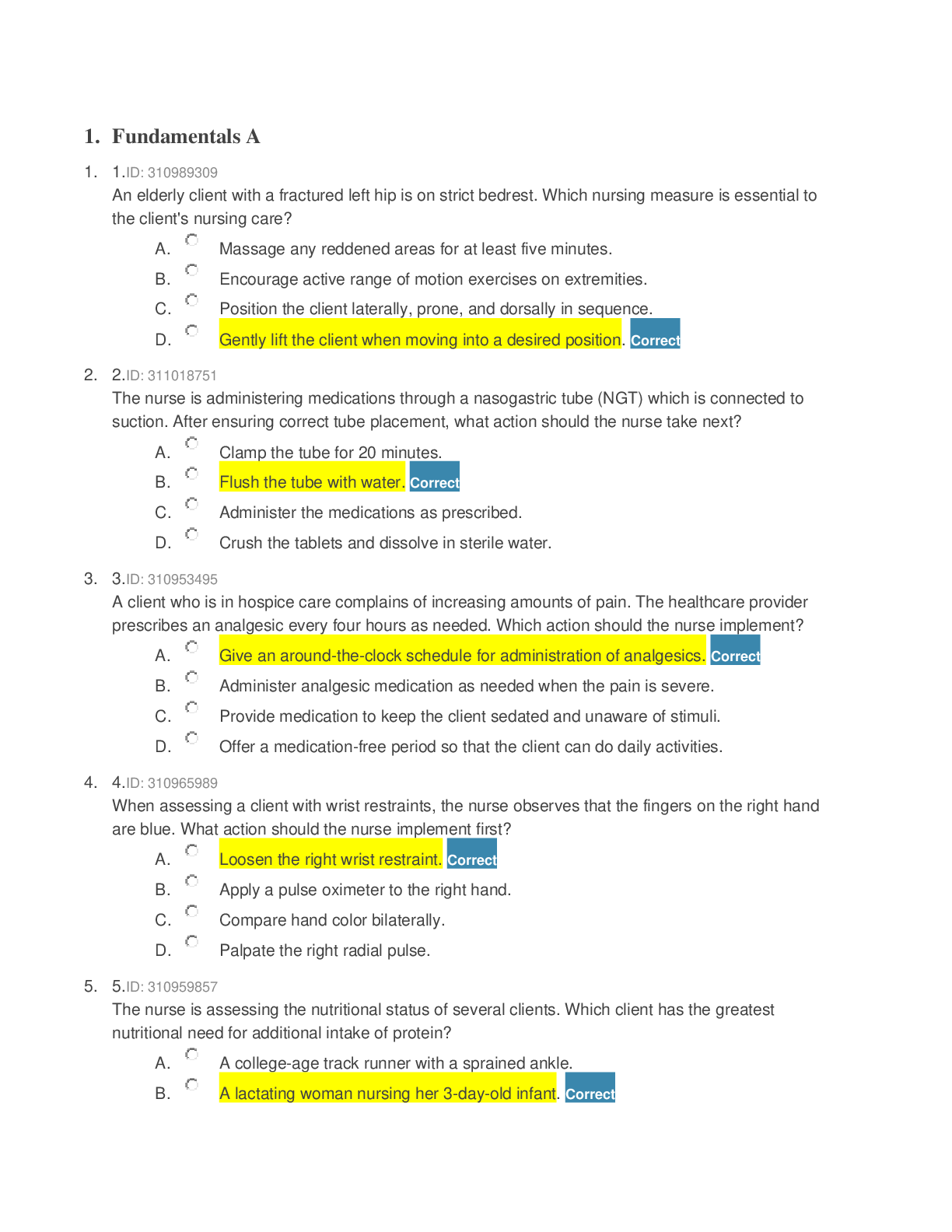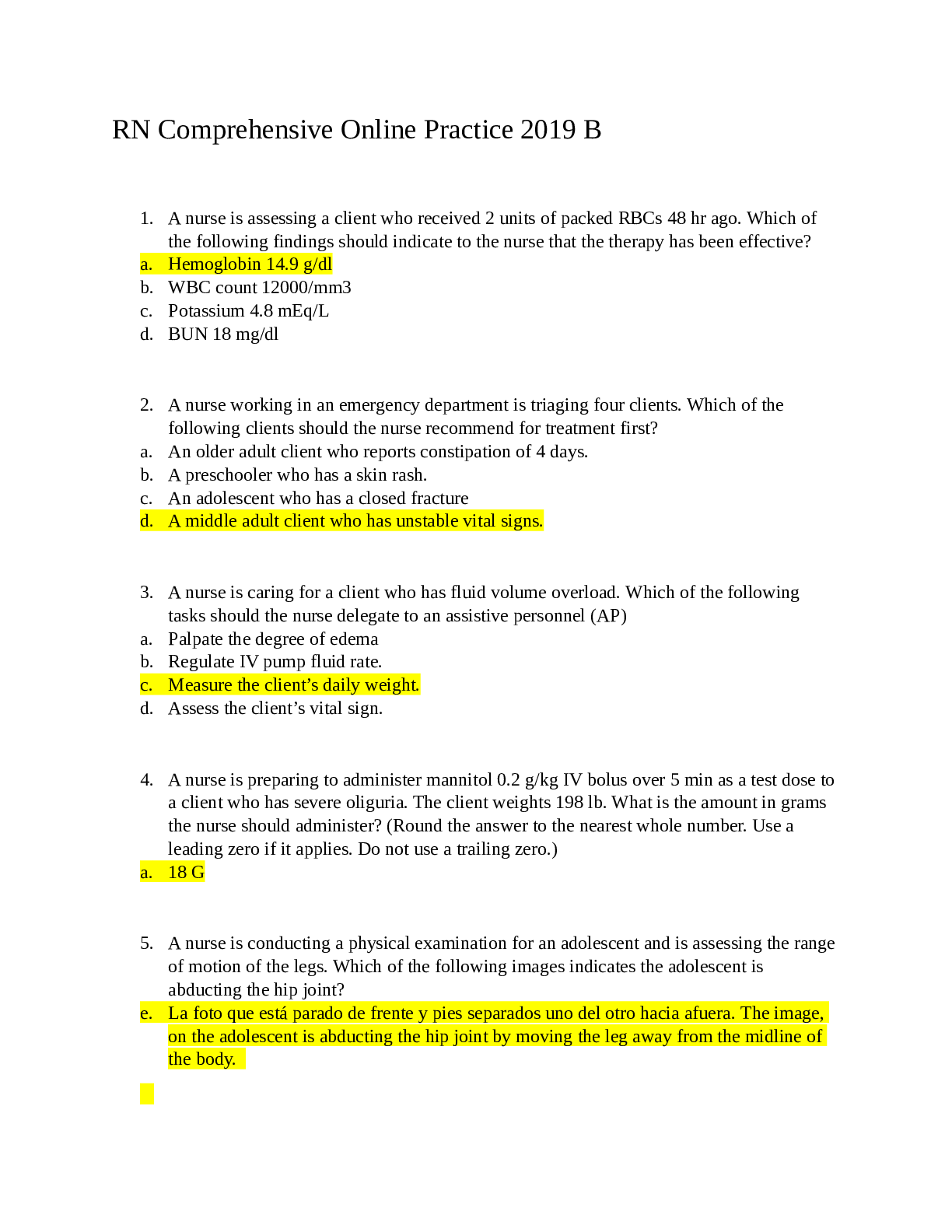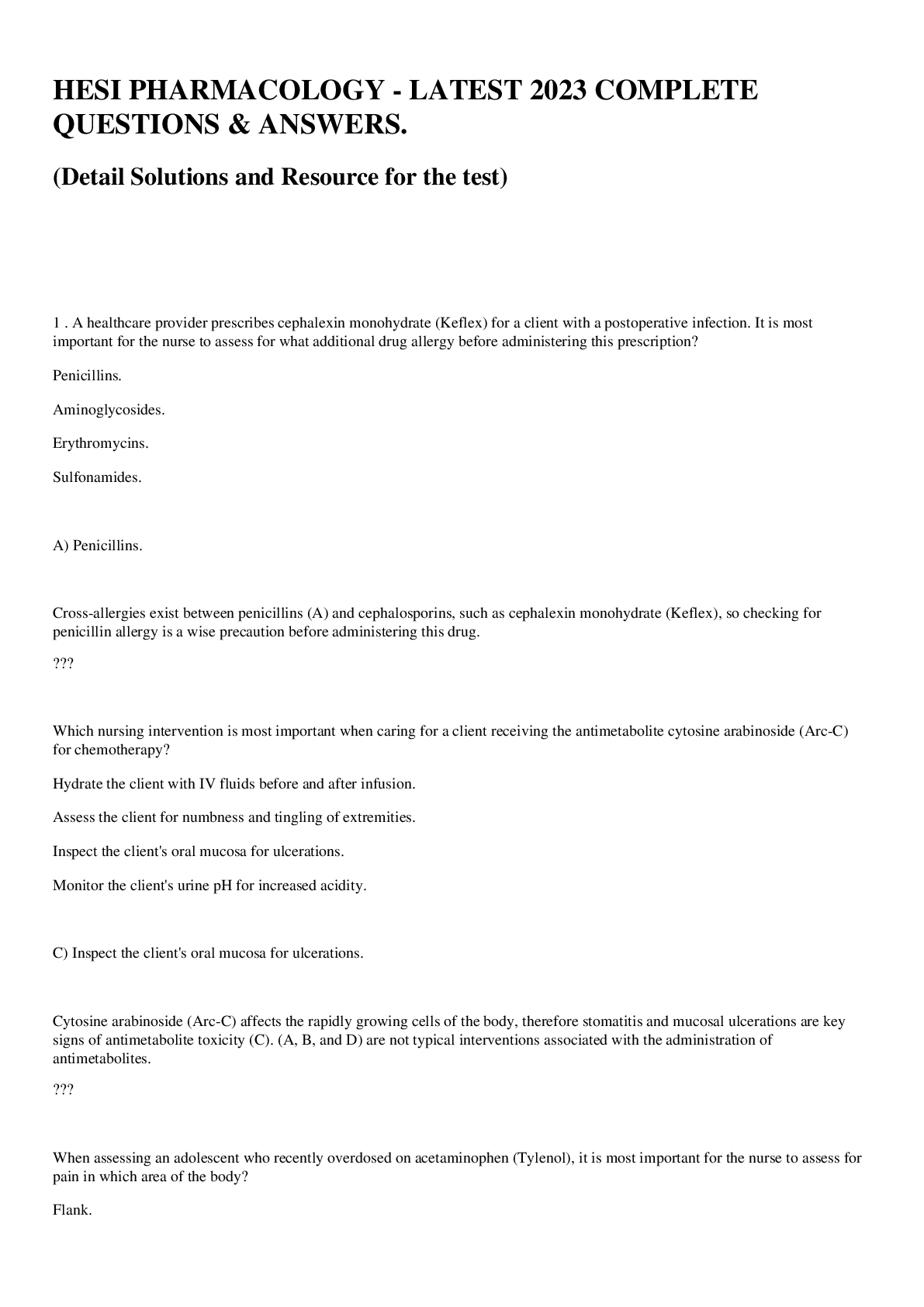NR 324 Exam1 STUDY GUIDE(Chapter 17, 26, 27, 28 and 29) SET 1: Chamberlain
Document Content and Description Below
NR 324 Module 3 Course Content Exam 1 (On Module 1 – 2) – Chapter 17, 26, 27, 28 and 29 Set 1 Calculation of Fluid Gain or Loss Electrolyte Composition of Fluid Compartments Normal Serum Electroly... te Values Fluid Volume Deficit – HYPOVOLEMIA – Shift of fluids from plasma into interstitial fluid. Fluid Volume Excess – HYPERVOLEMIA- shift from interstitial fluid into plasma fluid Hypertonic, Hypotonic and Isotonic solution Sodium imbalances Hypernatremia (Na > 145 mEq/L) Hyponatremia (Na <135 mEq) Potassium Imbalances Hyperkalemia (K > 5.0 mEq) Hypokalemia (K < 3.5 mEq) Calcium imbalances Hypercalcemia (Ca > 10.2 mg/dL) Hypocalcemia (Ca <8.6 mg/dL) Magnesium imbalances Hypermagnesemia (Mg >2.5 mEq/L) Hypomagnesemia (Mg <1.5 mEq/L) Hyperphosphatemia Hypophosphatemia Acid-base imbalances: Etiology, ABGs interpretation, clinical manifestations, and nursing and collaborative management for each of the following conditions: COPD DIAGNOSTIC PROCEDURES EMERGENCY MANAGEMENT: Thoracic Injuries Pneumonia Tuberculosis Tracheostomy Care.................................................................CONTINUED TILL CHAPTER 29 [Show More]
Last updated: 2 years ago
Preview 1 out of 30 pages
.png)
Buy this document to get the full access instantly
Instant Download Access after purchase
Buy NowInstant download
We Accept:

Reviews( 0 )
$13.00
Can't find what you want? Try our AI powered Search
Document information
Connected school, study & course
About the document
Uploaded On
Dec 08, 2020
Number of pages
30
Written in
Additional information
This document has been written for:
Uploaded
Dec 08, 2020
Downloads
0
Views
113

.png)
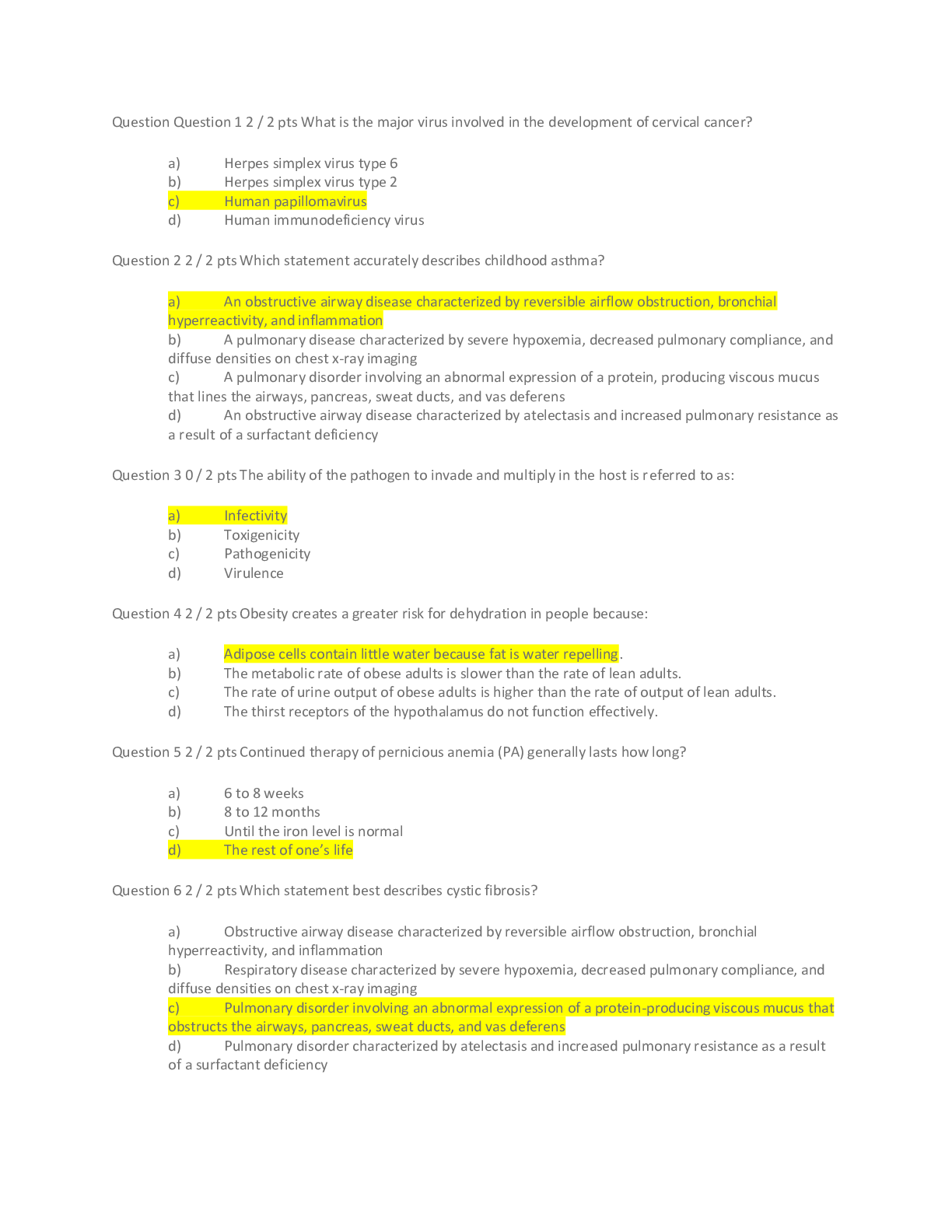

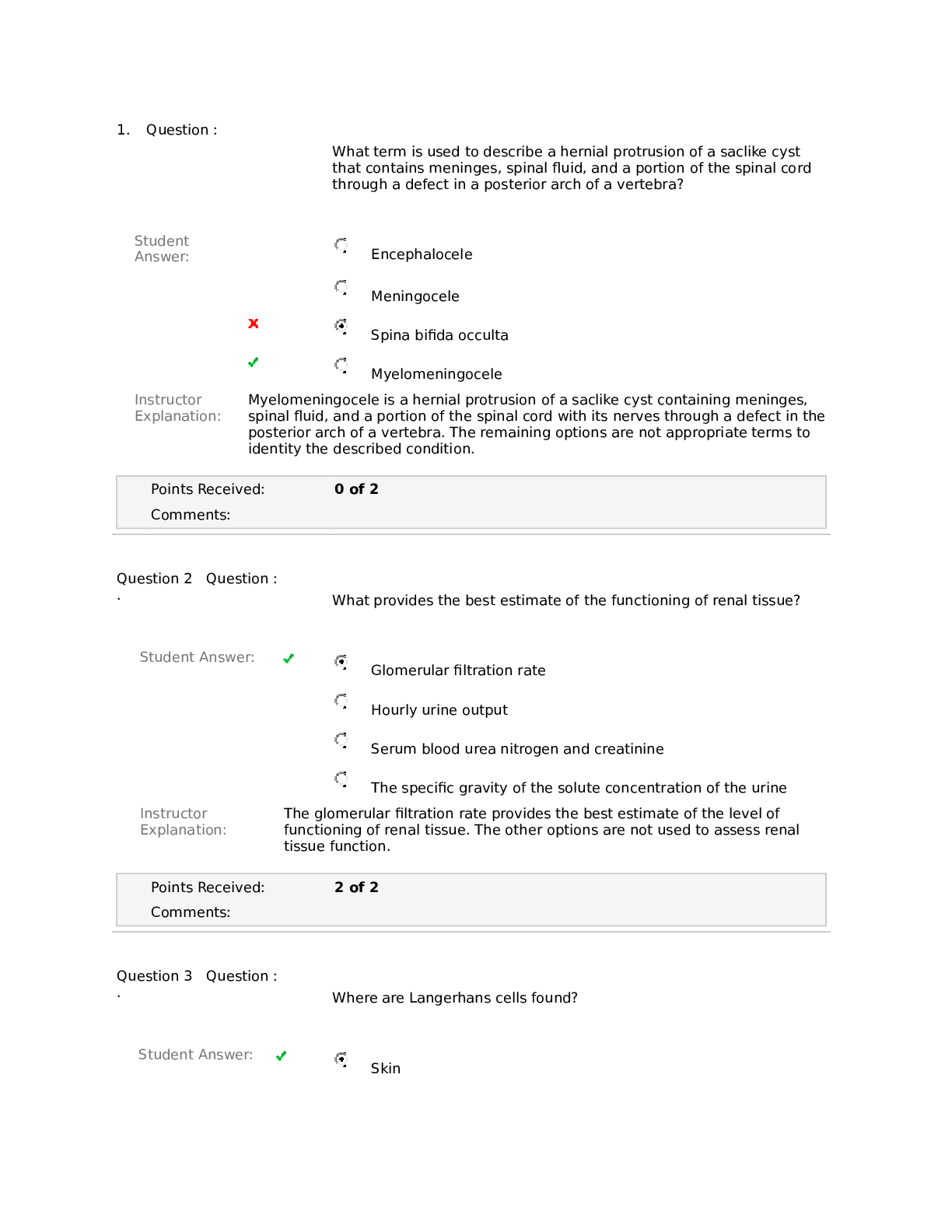
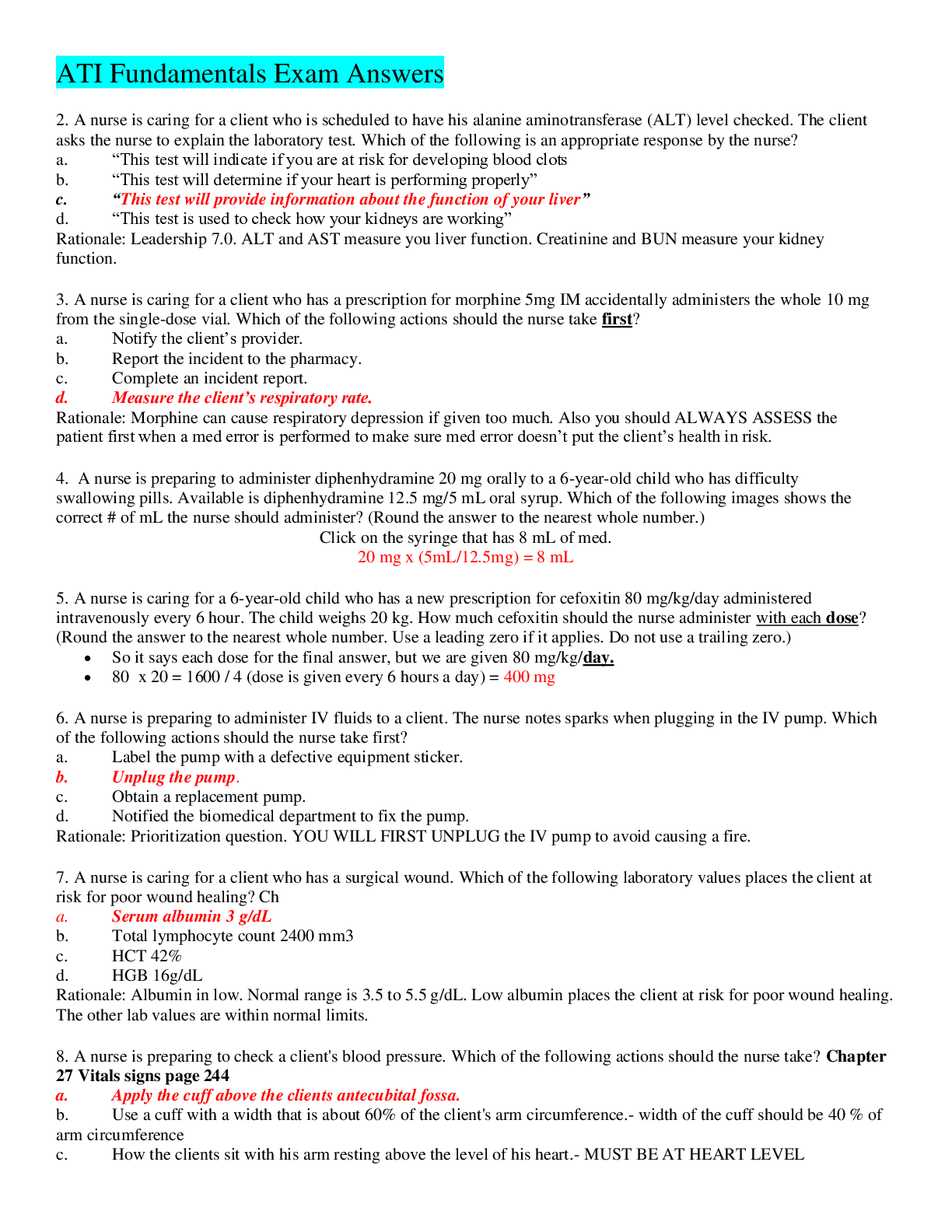
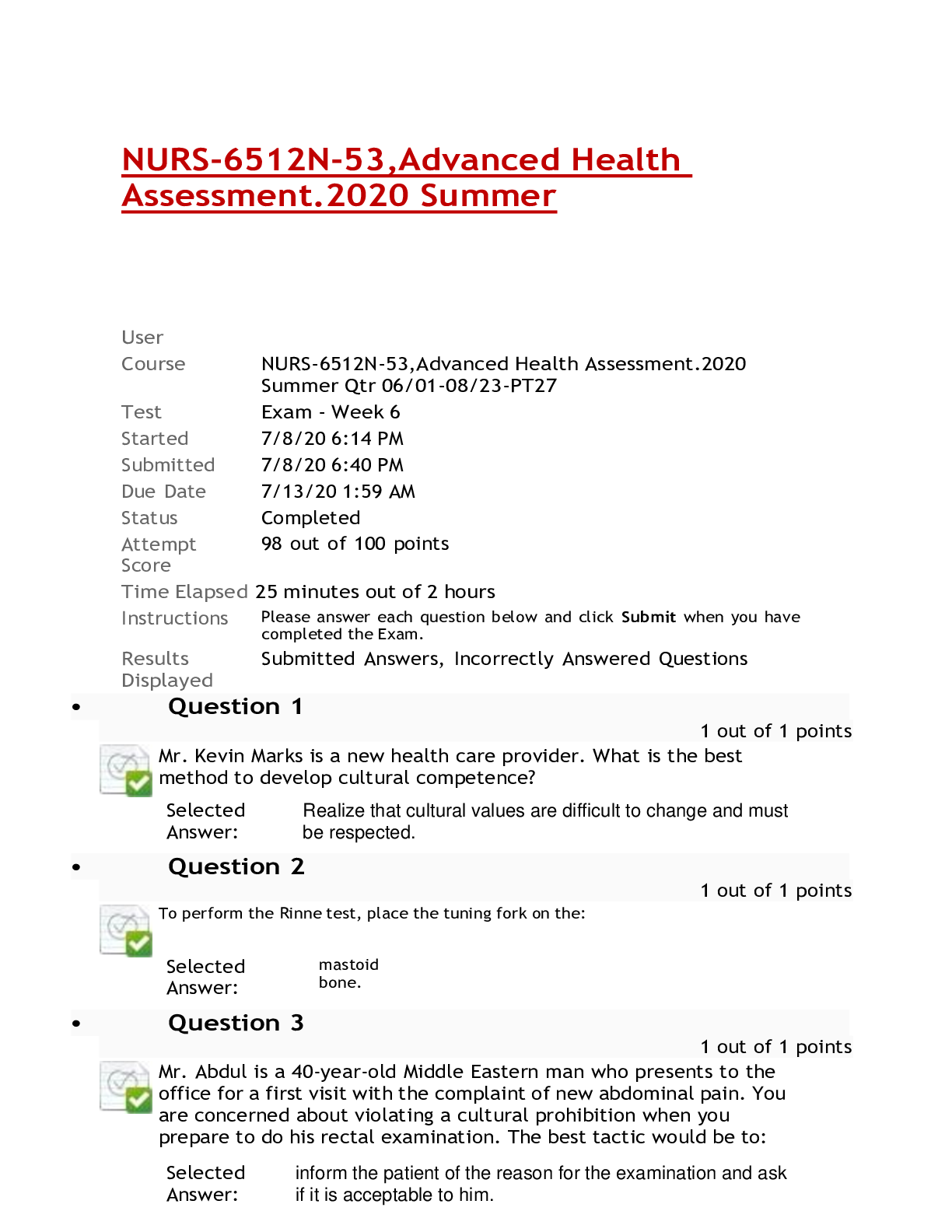
.png)
